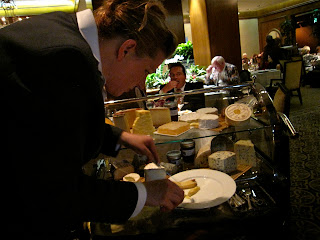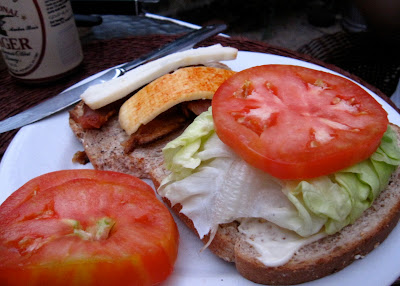My dad is a Maytag man. He’s lived in Iowa going on 40 years, surrounded by the finer pleasures of that rather ho-hum state: good sweet corn, great pork ribs, and fantastic blue cheese. As a kid, I used to look out at the cornfields and wide sky and dream of getting some city grit under my nails. I couldn’t wait to put Iowa behind me. But Pops held steady. He bought a house in the woods and traveled when he could – always with his fiddle –and he learned to appreciate the quiet life. For entertainment, he looks to hummingbirds and his hi-fi.
I spent a week with him in Iowa this month, my longest trip back since I was a teenager. It gave me a chance to eat a dozen ears, read in a hammock, and put together a decent Iowa cheese plate. Used to be that Iowa was my Kraft Cheese Single, but it’s moved up in the world. I was impressed to see a new food co-op, larger than any in my new home city of Philadelphia, and in that food co-op I found an impressive array of local cheeses. Watch out, Wisconsin.
Reichert's Dairy Air, a goat creamery in Knoxville, IA seemed to be the choice of a co-op staffer who was hesitant – as Iowans tend to be – to rave about one cheese over another. Still, I could tell by the way she talked about Reichert's use of fresh herbs, which were “hand-mixed” into the chevre, that she favored this local goat cheese. In her subtle way, she steered me right. This farmstead chevre -- made on a small, sustainable Iowa goat dairy -- was pretty much perfect. (Reichert's also makes Robiola and is the first, if not only, U.S. Robiola maker. Nudge. Nudge.)
Reichert's Chive Chevre was wonderfully creamy, lightly tangy, and…in a word, fresh. I can take or leave most spreadable chevre, which is often dry and clumpy with too much of a Sourpatch twang. It’s good that this chevre came packaged in a sundae cup, because I snuck spoonfuls of it out of the fridge one night and it cured my hankering for soft-serve. (If only there were Mr. Chevre trucks instead of Mr. Softee trucks all over Philadelphia. I’d chase their bleating calls through the neighborhood for chevre like this.)
We also tried a Gouda from Oskaloosa. Cow’s milk. Fruity and mild. Dad, who’s a strong-cheese lover like I am, exclaimed, “Well, that tastes like butter. Only better.” The texture was terrific, but since I like more flavor, I’d like to try the mature Gouda from Frisian Farms Cheese, which is made by the Bandstra Brothers, who raise grass-fed Holsteins.
Ultimate Iowa Cheese Plate
1. Maytag Blue
Below, my Pops, assisting in a photo shoot for last week's Prairie Breeze post:



































